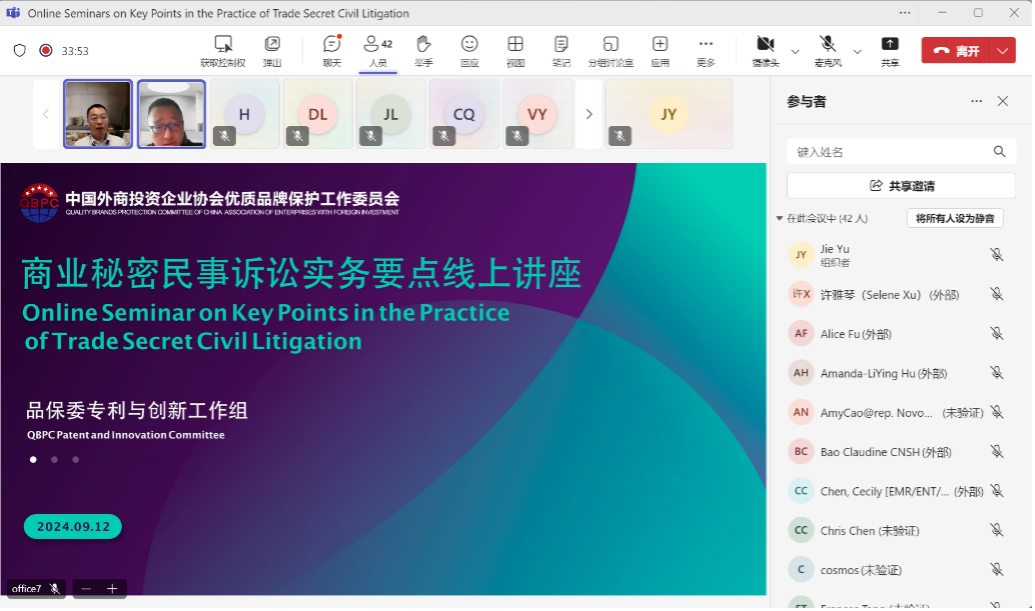On September 12, the QBPC Patent and Innovation Committee (PIC) held an online seminar on the practical points of civil litigation on trade secrets, with Lawyer Cosmos Yang sharing his experience and insights from handling trade secret cases. The meeting was hosted by PIC Chair Frank Liu, and more than 50 QBPC members attended.

Based on relevant cases he had handled, Cosmos outlined the key points of civil litigation of trade secrets. According to him, right holders faced a heavy burden of proof when defending their rights, and they had to first prove that confidentiality measures and trade secrets had been infringed under the Anti-Unfair Competition Law, as well as identifying the specific contents and carriers of the trade secrets. Through case study, Cosmos presented the various forms of technical secrets and how to effectively prove them. Since technical secrets often existed in the form of drawings, data and others, the right holders had to accurately define them and provide detailed evidence. He emphasized that reasonable confidentiality measures were the foundation of legal protection, and the confidentiality obligations in Contract Law and Company Law might not be sufficient to replace specialized confidentiality measures. In terms of proof of infringement, the right holder had to prove that the infringer had the opportunity to access and use the same or substantially similar trade secrets, and it was extremely important to fully utilize the provisions of the Anti-unfair Competition Law on the shifting of the burden of proof and the lowering of the standard of proof. In conclusion, the success of trade secret litigation depended on the precise definition of the secret content, the implementation of effective confidentiality measures, and the sufficient proof of infringement. Despite the challenges, the right holders could gain a favorable position through sufficient preparation and proof.
